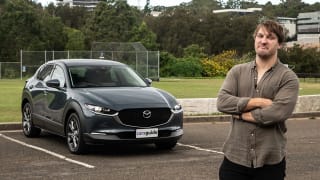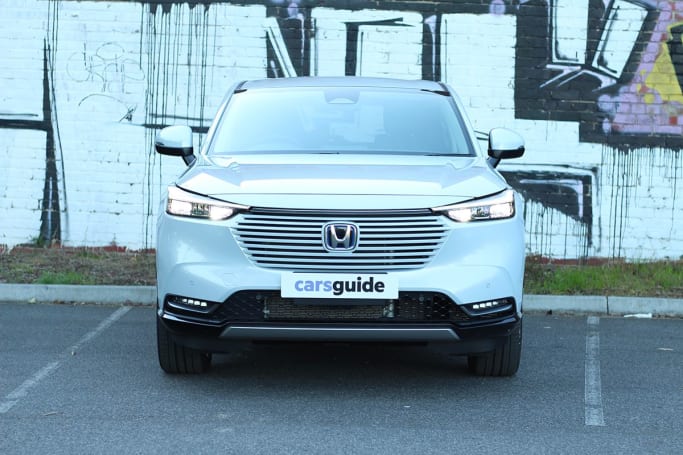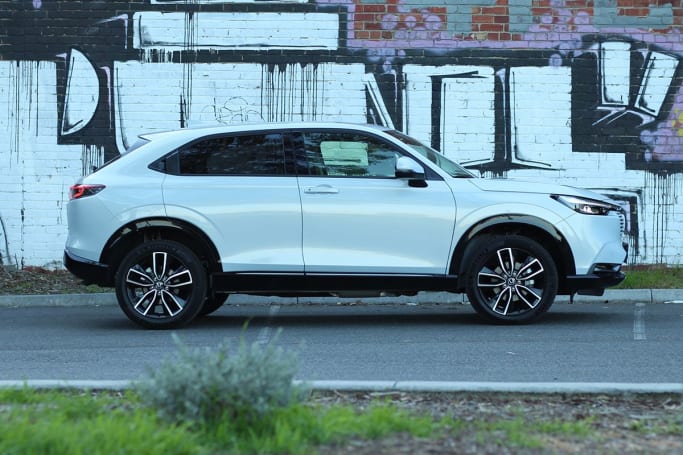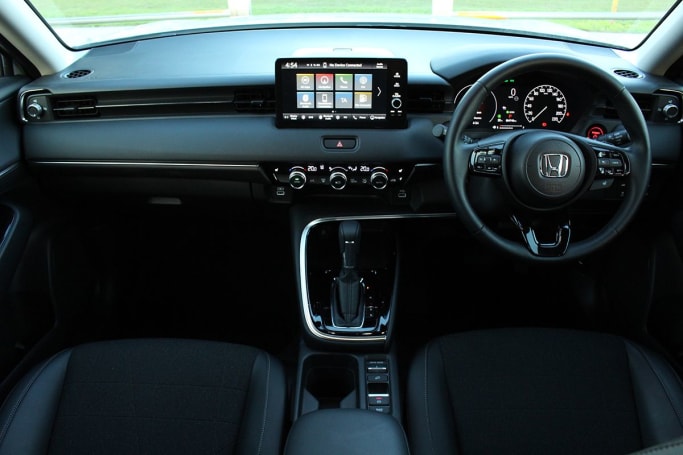
Mazda CX-30 2023 review: G25 Astina
Mazda's CX-30 was impressive when it launched, but in a crowded small SUV space, is it still a stand-out?
Browse over 9,000 car reviews

In Australia, electrified cars are coming in a big way. Some parts of Europe already buy mostly electric or hybrid cars, and a lot of the world would see an EV as a normal option when considering a new car.
It’s catching on here, too. In 2023 so far, almost one in every seven cars has been electrified in some way, whether a traditional parallel hybrid, a plug-in, or a full battery electric car. In 2022, it was about one in 10.
And thanks to Toyota having gradually introduced the parallel hybrid into most of its passenger models over the years, most Australians, especially those who live in the city and catch taxis or Ubers, have driven or at least been in a hybrid car.
But no longer are they just Priuses (Prii?) and Camrys, but every brand under the sun has some form of hybridisation going on.
For Honda, while the Australian arm has been slow to get ‘em here, the brand now has three cars with batteries aiming to help save fuel: the Civic hatch, the Accord sedan, and the HR-V small SUV.
Here, we’ve got the latter.
Called the Honda HR-V e:HEV L in full, it’s the second model for the brand to launch locally since it moved to a single-price, retail sale model with a shift to premium-spec offerings, after the Civic last year.

It’s also the second to arrive with the brand’s new-ish 'e:HEV' hybrid system, which allows the engine, the electric motor, or both to drive the wheels, and seems to rely more heavily on a pure-electric driving mode than its rivals.
It pairs the electric system with a 1.5-litre petrol four-cylinder engine, no turbocharger, for a total 96kW of power and 253Nm to turn the front wheels.
It’s not blow-your-socks-off stuff, but compared to the other HR-V on sale, the non-hybrid Vi X and its 89kW of power and 145Nm of torque, it’s healthy.
As a side note, both engines are paired to a continuously variable transmission, three words that have historically been like nails down a chalkboard for those who enjoy driving.

At first impression, as with the CVTs seen in many other models of late, there’s no reason for complaint in regards to the HR-V.
But back to the engine. The 112Nm of extra torque on tap isn’t the real reason to spend more - and we’ll get to the spend - on the higher grade e:HEV L. It’s the combination of extra features, and the ability to avoid the servo for longer.
While the diminutive engine drinks a claimed 5.8L/100km on the combined cycle in the lower variant of the HR-V, the hybrid comes with a claimed fuel efficiency of 4.3L/100km… and it doesn’t even need 98RON, according to Honda. Even 91 will do just fine.
Amongst fellow CarsGuide writers, it’s the question I’ve been asked most: “how are the fuel figures looking?”

After the first 408km of driving, primarily around the inner suburbs and CBD of Melbourne, the HR-V’s trip computer claims it’s using 6.1L/100km. At the pump, the maths came out at 6.2L/100km.
Of course, check back in three months after some proper road testing and highway mileage to see how that figure settles. Not every fortnight consists of a few trips to the office and home.
Okay, so the extra spend I mentioned? This is where that one-price model and high-grade strategy Honda is employing might turn some previous owners away.
While the lower Vi X variant will set you back $36,700, drive-away, which is already starting to approach top-spec Hyundai Kona Highlander areas, the hybrid e:HEV L comes in at $47,000, drive-away.

Some much more powerful small SUVs like the VW T-Roc R-Line (140kW/320Nm) or even, for a bit more, the 206kW/392Nm Hyundai Kona N are in this ballpark - so Honda has to bring its A-game for features, right?
This is where the first impression of the HR-V left me feeling a little let down.
On paper, it’s an impressive list. The HR-V L comes with heated seats and steering wheel, a 9.0-inch touchscreen, a six-speaker sound system (over the other model’s four), active cornering lights, LED DRLs, leather cabin accents, and a powered tailgate.
But settling into the driver’s seat of the HR-V I was slightly confused. ‘Is this really the top-spec? Where are the leather seats, these are cloth - there are also only four of them - and they’re manually adjustable? And there’s no wireless phone charger!’

It’s a disappointment to see these things left out, especially the latter - those who wish to use the wireless Apple CarPlay will find their battery draining quickly. Android Auto is wired-only, so my phone remains topped up.
You can get a wireless phone charger for the e:HEV L, but it’s a $640 accessory option that you need to dive into the website to find. C’mon, Honda, at $47,000 that should be standard.
I’m reserving my final value judgement about the HR-V’s pricing and feature balance until the end of its three month tenure with me, because its hybrid drivetrain is impressive and - as someone who enjoys a sports car and a lively steer - I’m finding it quite smooth, collected, and fun.
It's also drawing more praise from strangers than I had expected. I parked before work one day in an underground complex, right in the middle of Melbourne and full of Euro SUVs, and was complimented on the 'handsome little Honda' by a Scottish fellow.
First impressions behind the wheel suggest there’s more to this car than its styling and the comparatively slim list of mod-cons.
It also comes with a couple of extra safety features on top of the fairly fleshed-out list the other HR-V shares, adding active cornering lights, rear cross-traffic alert and and blind-spot monitoring to the list that already includes autonomous emergency braking, a forward collision warning, adaptive cruise control, a reversing camera, traffic sign recognition and lane departure warning.
It come with a four-star safety rating from ANCAP, which isn’t terrible, but is short of maximum five-star rivals like the Toyota Yaris Cross and Nissan Qashqai.
I’ll be having a closer look at the HR-V and its rivals, as well as its ownership costs and day-to-day convenience over the coming months, so watch this space.
Acquired: May 2023
Distance travelled this month: 408km
Odometer: 4797km
Average energy consumption this month: 6.2L/100km
$44,000 - $51,150
Based on third party pricing data
$44,000 - $51,150
Based on third party pricing data